South Island
Invercargill

Today we're off to the city of Water and Light. Although Puerto Williams in Argentina is the most southerly city in the world, Invercargill is close at 46.4 degrees south. At this latitude, and with the help of the Stokes Magnetic Anomaly in the magnetosphere, it gets a good display of the Aurora Australis. This is the Light. The Water is the blinding horizontal rain you get at the corner of Dee and Tay.
So off to Invergiggle, the land of Mayor Tim and Henry the Lizard.
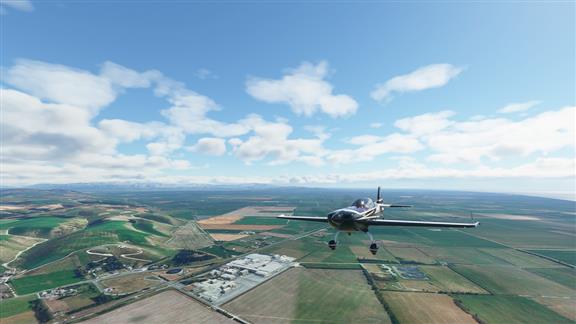 Oamaru is big on cheese. I really don't know what a cheese factory looks like. Let's say this is it.
Oamaru is big on cheese. I really don't know what a cheese factory looks like. Let's say this is it.
|
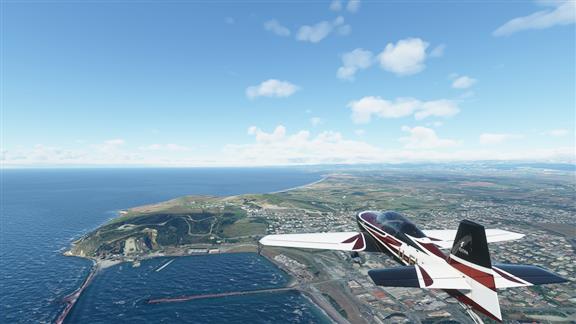 The penguin colony again. Or one of them at least. The yellow-eyed penguins are a bit south of here on shag point.
The penguin colony again. Or one of them at least. The yellow-eyed penguins are a bit south of here on shag point.
|
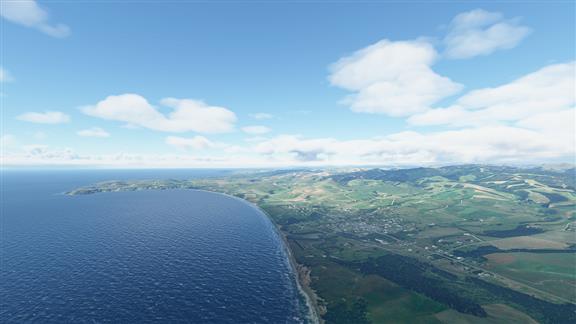 Which is right here. Shag point is Matakaea where the canoe Araiteuru foundered and lost its cargo. In the foreground is Koekohe Beach which can also be called Moeraki. This is where all the eel baskets, kumaras and other cargo washed up on shore and turned to stone. Today these items can be seen on the beach as spherical rocks of up to a couple of meters in diameter, called the Moeraki Boulders.
Which is right here. Shag point is Matakaea where the canoe Araiteuru foundered and lost its cargo. In the foreground is Koekohe Beach which can also be called Moeraki. This is where all the eel baskets, kumaras and other cargo washed up on shore and turned to stone. Today these items can be seen on the beach as spherical rocks of up to a couple of meters in diameter, called the Moeraki Boulders.The Katiki Boulders, on the other hand, are on the other side of shag point. They look much the same but have a less romantic origin. They were formed over the course of 5 million years or so as sort of petrified Paleocene mudstone. If you crack one open (don't under any circumstances do this; they are highly protected) then you will find that they contain Mosasaur and Plesiosaur bones. In none of the legends does anyone return from Polynesia with baskets of ancient marine monsters. |
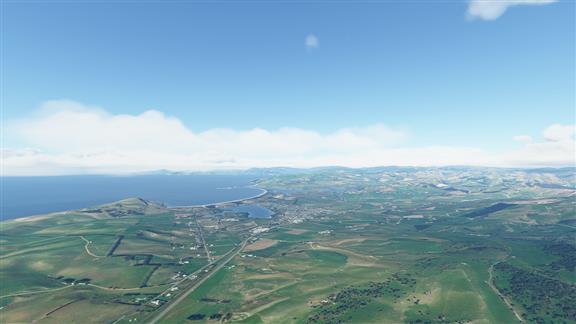 Waikouaiti. Sheep and surfing, together at last.
Waikouaiti. Sheep and surfing, together at last.
|
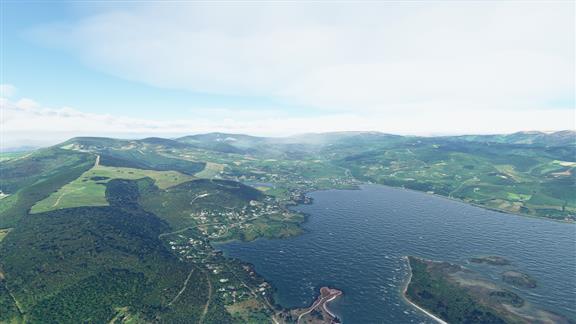 Waitati, on Blueskin Bay. There are a lot of pretty towns here.
Waitati, on Blueskin Bay. There are a lot of pretty towns here.
|
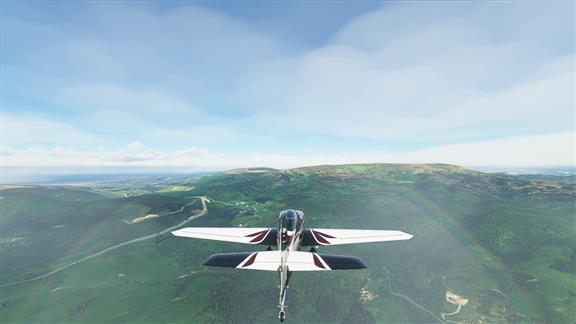 Just over this hill...
Just over this hill...
|
We find Dunedin, or Dùn Èideann, Scottish Gaelic for Edinburgh. Actually, the two previous towns were technically part of Dunedin, so we've been here for a bit.
Dunedin is known for its Yellow-eyed penguins (the rarest in the world), the New Zealand Sea Lion (also the rarest in the world) and Baldwin Street (the steepest in the world).
City planning for New Zealand was often carried out in London by people who had never been here; as such, a grid structure was often imposed on places that did not lend themselves to a grid. Baldwin Street is one such place. While someone who was actually here walking around would say, 'Man, that's some hill.', someone working thousands of miles away from a flat map would just draw the streets in, and it was someone else's problem to pave them. Turns out you can't pave Baldwin Street; it is so steep that asphalt would flow downhill. So about half of the street is concrete. At its steepest, near the top, Baldwin Street has a 35% grade, or 1:2.86. What that actually means is, your average ranch style house, being 48 feet wide and a single story, would have a drop of 20 feet side by each. So the uphill bit would be buried under ground and the downhill bit would be sticking out over nothing.
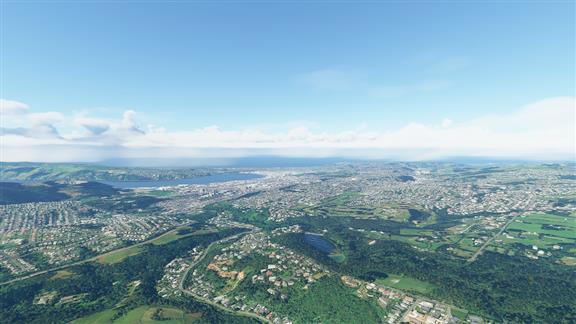 |
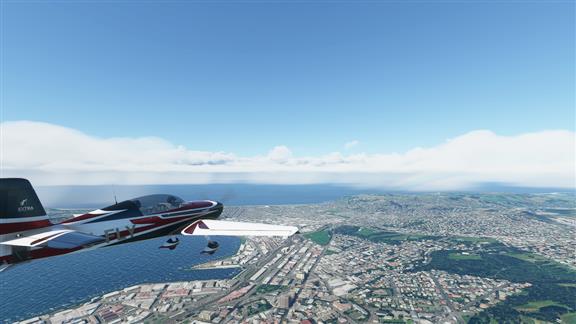 |
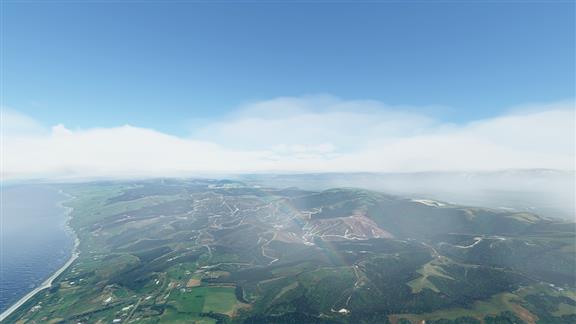 Getting a little misty up ahead. Better turn inland.
Getting a little misty up ahead. Better turn inland.
|
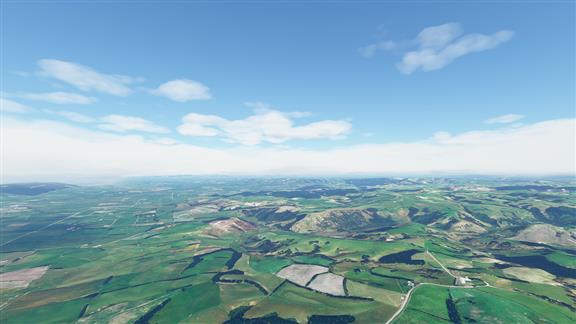 Right at the moment there are 49 jobs available on one web site for farm hands and harvest help in the Dunedin area. Some of the farms have become eco destinations for that sort of tourist.
Right at the moment there are 49 jobs available on one web site for farm hands and harvest help in the Dunedin area. Some of the farms have become eco destinations for that sort of tourist.
|
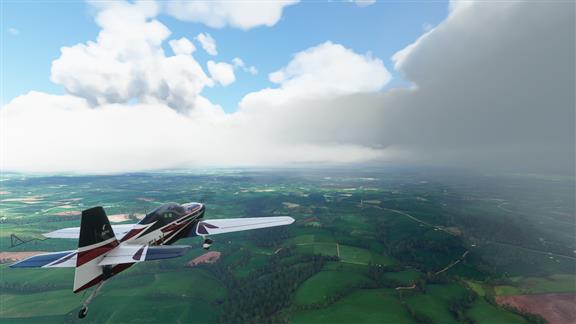 Invercargill's over there somewhere.
Invercargill's over there somewhere.
|
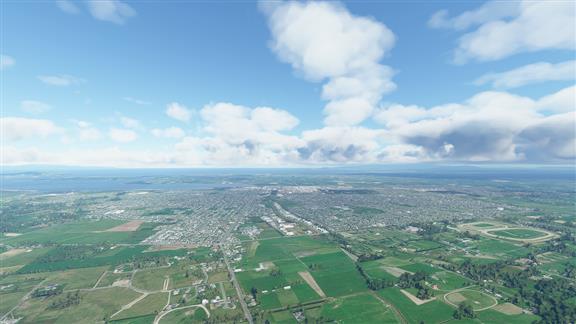 There we go. Invercargill, after Inbhir, Gaelic for a river's mouth, and Cargill, some dour Scottish guy. The dour Scot influence is still apparent in the place and most people still roll their Rs, just like they did when they split off from their church back home and moved here.
There we go. Invercargill, after Inbhir, Gaelic for a river's mouth, and Cargill, some dour Scottish guy. The dour Scot influence is still apparent in the place and most people still roll their Rs, just like they did when they split off from their church back home and moved here.In 1834 the Church in Scotland was the Church of Scotland, Eaglais na h-Alba. It was (and is) a fairly right-wing Protestant denomination; member of the World Communion of Reformed Churches, which is the third largest Christian Communion after the Roman Catholics and the Eastern Orthodox Church. Ever since the Claim of Right, the church had claimed the right to manage its own affairs, free from royal interference. But the more powerful amongst the parishioners also claimed the Right of Patronage, an attempt by nobility to regain some semblance of control over the Scots and their church which was lost in the Glorious Revolution. The Right of Patronage essentially says that you can buy the right to pick the next minister. So there were two factions within the church: the Evangelical Party wanted the Veto Act, the right of ordinary parishioners to veto the patron's choice of minister; the Moderate Party didn't want to stir the pot with the nobility. In 1834 the Evangelical Party gained the majority and passed their Veto Act. The act was immediately put to use by the parishioners of Auchterarder. They unanimously rejected the patron's choice of Robert Young as the new minister and refused to have anything to do with him. He sued. The court ruled that the parishioners had acted without authority and infringed on the patron's rights. Well and good. But then they also ruled that the Established Church was a creation of the State and had better toe the line. That was bad. Well, one thing led to another. Ministers were ordained by the church against the court's wishes and prosecuted. Some ministers defied the church and held the secular courts as having precedence; they were kicked out. Finally, in 1843, about a third of the ministers acknowledged the courts' jurisdiction over the Established Church, and then left it to form the Free Church of Scotland. Even though the new church had schismed from the Established Church, it still supported the Establishment Principle, which holds that the State should recognize Christ's authority over all things and set up the visible church within the nation - essentially that means that the State can pay the bills but they better damn well stay out of spiritual affairs. But being a member of the Free Church AND a supporter of the Establishment Principle kind of by definition means you are in favour of disestablishing the old Church of Scotland. And then, of course, there were those who were not in favour of that either, and they were the Antidisestablishmentarianists. So for any two Scots at the time there were at least three opinions about how the church and the state should interact. Churches were schisming, joining each other, schisming again, and some even blending back into the Church of Scotland. Meanwhile, Walter Mantell had purchased a large block of land in the south of New Zealand - Otago - for settlement by Europeans. Some members of the Free Church of Scotland saw this as an opportunity, so off they went. And to Prince Edward Island too, but that's kind of tangential to this story. The church settled in Southland, part of Otago. And then they promptly seceded into their own province. So that's kind of the back story to Invercargill. It's a town built on religious and political fractures, but interestingly, one of the only places in New Zealand not on a tectonic fault. Ever since the gold rush ended its economics have been dodgey as people leave the city and drift north. So it has been trying to lose its Angry Scots image and promote itself as a family friendly place to live. There have been a couple of hiccups in this makeover - Prohibition and Women's Suffrage, both due to the efforts of Eliza Brown. But Prohibition ended when the servicemen returned after the second world war, and Women's Suffrage ended with a vote. So welcome to Invergiggle! |
 And that's it for today. Let's go say Hi to Henry.
And that's it for today. Let's go say Hi to Henry.BTW Invergiggle is a strange marketing campaign to have the town's name changed so as to make the place sound charming. Tim the Mayor is Sir Timothy Richard Shadbolt, the flamboyant eight term mayor of Invercargill who got his start in politics in a cheese commercial. And Henry the lizard is actually Henry the Tuatara, who at age 111 became a dad for the first time. Tuataras are not lizards; their line predates lizards by quite a large margin. Most Rhynchocephalia literally went the way of the dinosaurs. |